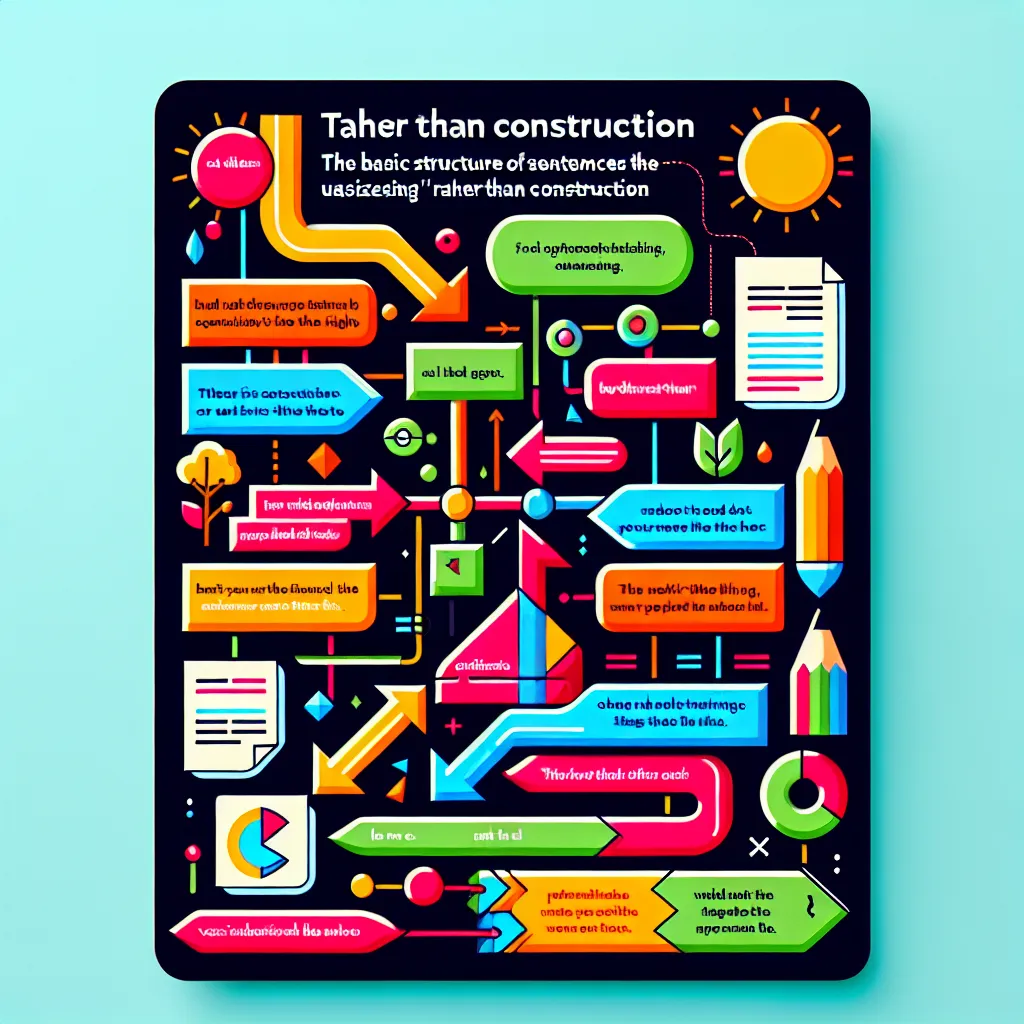The phrase “rather than” is a powerful tool in English grammar, especially when preparing for the IELTS exam. It allows you to express preference or contrast between two options, adding sophistication to your language use. In this guide, we’ll explore how to effectively use “rather than” followed by a verb in IELTS writing and speaking tasks.
Understanding “Rather Than” + Verb
“Rather than” is commonly used to show preference for one action over another. When followed by a verb, it creates a structure that can significantly enhance your IELTS score by demonstrating advanced language proficiency.
Basic Structure
The basic structure is:
[Verb (base form)] + rather than + [Verb (base form)]
For example:
- I prefer to walk rather than drive to work.
- She decided to stay home rather than go to the party.
In these examples, “rather than” is used to contrast two actions, with the first action being the preferred or chosen one.

Using “Rather Than” + Verb in IELTS Writing
Incorporating this structure in your IELTS Writing tasks can help you achieve a higher band score by demonstrating a wide range of grammatical structures.
Task 1: Report Writing
In Task 1, you can use “rather than” to compare data or trends:
- The graph shows that people prefer using public transportation rather than drive personal vehicles in urban areas.
- Companies are choosing to invest in renewable energy rather than rely on fossil fuels.
Task 2: Essay Writing
For Task 2 essays, “rather than” can be used to present contrasting ideas or solutions:
- Governments should focus on preventing crime rather than build more prisons.
- Modern education systems encourage critical thinking rather than promote rote learning.
“Rather Than” in IELTS Speaking
Using “rather than” in your speaking responses can showcase your ability to express complex ideas fluently.
Part 2: Cue Card
When describing a situation or experience, you might say:
“I decided to take a gap year rather than go straight to university. This allowed me to gain work experience and travel rather than rush into further education.”
Part 3: Discussion
In more in-depth discussions, you can use “rather than” to express opinions:
“I believe that cities should invest in improving public transport rather than build more roads. This would reduce traffic congestion rather than encourage more car use.”
Advanced Usage and Common Mistakes
To achieve a higher band score, it’s important to use “rather than” correctly and avoid common errors.
Correct Usage:
-
Parallel structure: Ensure that the verbs before and after “rather than” are in the same form.
- Correct: She prefers reading rather than watch movies.
- Incorrect: She prefers reading rather than watches movies.
-
Positioning: “Rather than” can be used at the beginning of a sentence for emphasis.
- Rather than complain about the problem, he decided to find a solution.
Common Mistakes:
-
Using “to” after “rather than”:
- Incorrect: I’d prefer to walk rather than to drive.
- Correct: I’d prefer to walk rather than drive.
-
Mixing verb forms:
- Incorrect: He chose studying rather than work.
- Correct: He chose to study rather than work.
Enhancing Your IELTS Score with “Rather Than”
To achieve a higher band score, use “rather than” in more complex sentence structures:
- Band 6 example: “I prefer to study at home rather than go to the library.”
- Band 7 example: “Rather than rely solely on textbooks, I find it more effective to supplement my studies with real-world applications.”
- Band 8-9 example: “Rather than adhering to conventional teaching methods, progressive educators are increasingly embracing innovative approaches that foster critical thinking and creativity.”
Conclusion
Mastering the use of “rather than” followed by a verb can significantly enhance your IELTS performance. Practice incorporating this structure into your writing and speaking to demonstrate a sophisticated command of English grammar. Remember to maintain parallel structure and use it in various contexts to showcase your language proficiency.
To further improve your skills, try creating sentences using “rather than” in different IELTS topics such as environment, education, technology, and social issues. This practice will help you become more comfortable with the structure and ready to use it effectively in your IELTS exam.